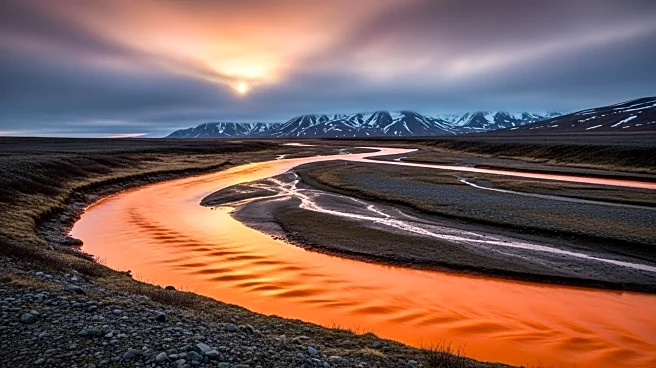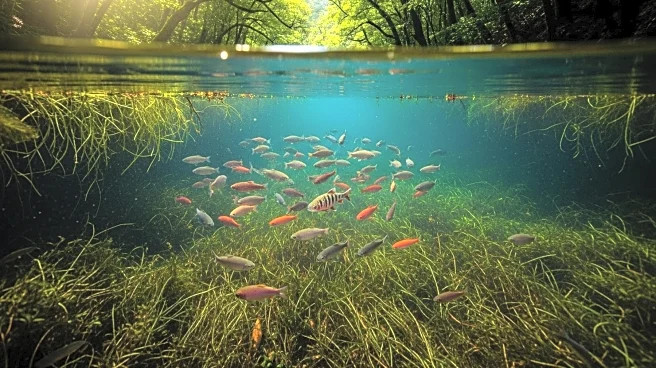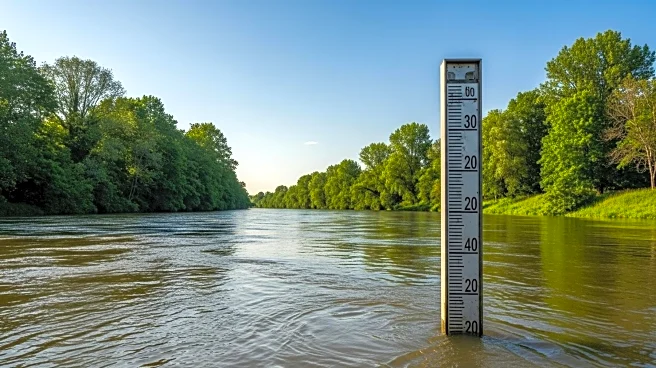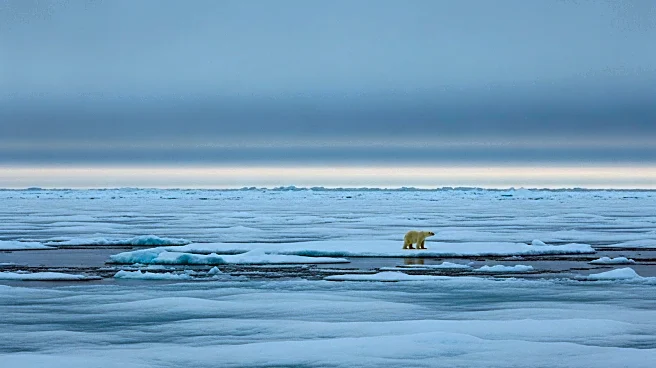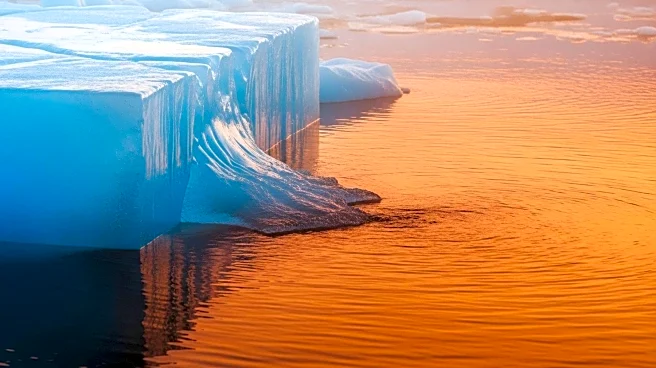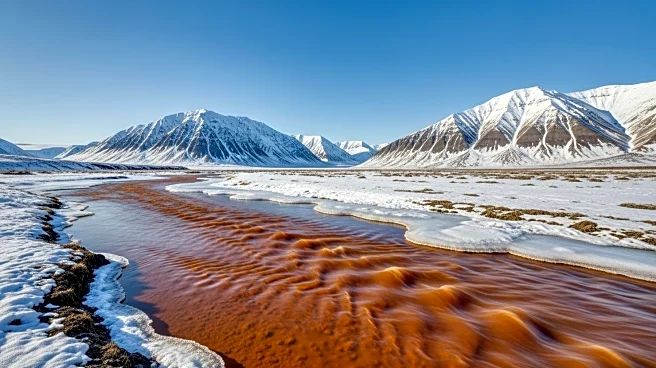What's Happening?
Recent studies have revealed that ice plays a significant role in the chemical reactions leading to the mysterious orange discoloration of Arctic rivers. Researchers have found that ice can dissolve iron minerals more effectively than liquid water, even at temperatures as low as minus 30 degrees Celsius. This discovery challenges the previous belief that frozen environments slow chemical reactions. The study, published in the journal PNAS, highlights how freezing creates microscopic pockets of liquid water between ice crystals, acting as chemical reactors where compounds become concentrated and acidic. This process releases iron from minerals, contributing to the orange hue observed in many Arctic rivers as the planet warms.
Why It's Important?
The findings underscore the active role of ice in environmental chemical processes, which could have significant implications for understanding climate change impacts. As freeze-thaw cycles become more frequent due to global warming, the release of iron into water systems could affect water quality and aquatic ecosystems across large areas. This research provides insight into how climate change might alter natural environments, emphasizing the need for close monitoring of these changes. The study also suggests potential applications for managing acidic environments, such as mine drainage sites and acid sulfate soils.
What's Next?
Researchers are continuing to investigate whether the observed chemical reactions apply to all ice containing iron. As climate change progresses, understanding these processes could be crucial for predicting and mitigating environmental impacts. The study calls for further exploration into the role of ice in chemical reactions, which may lead to new strategies for managing affected ecosystems.
Beyond the Headlines
The study highlights ice as an 'active player' in environmental processes, rather than a passive storage medium. This shift in understanding could lead to new approaches in environmental science and policy, particularly in regions affected by climate change.

